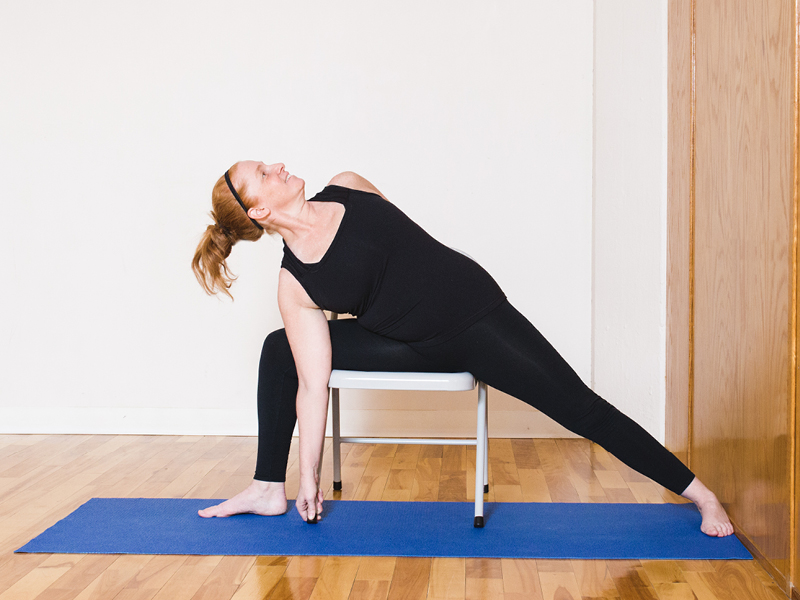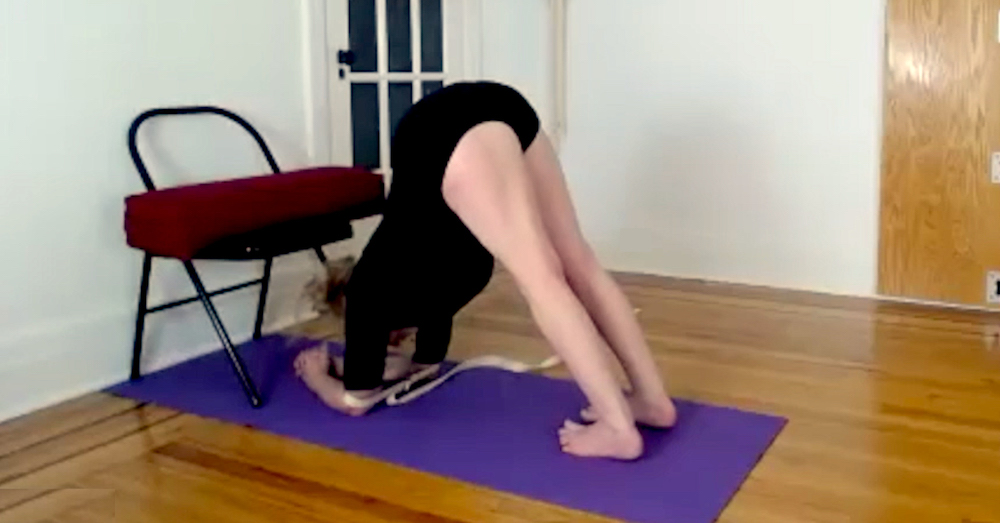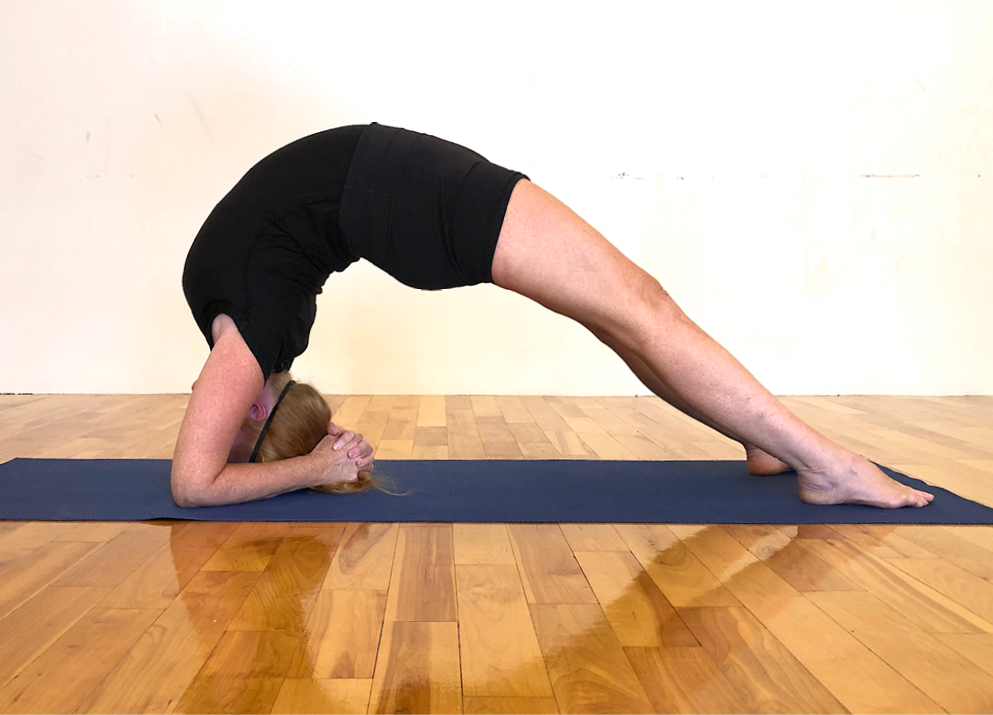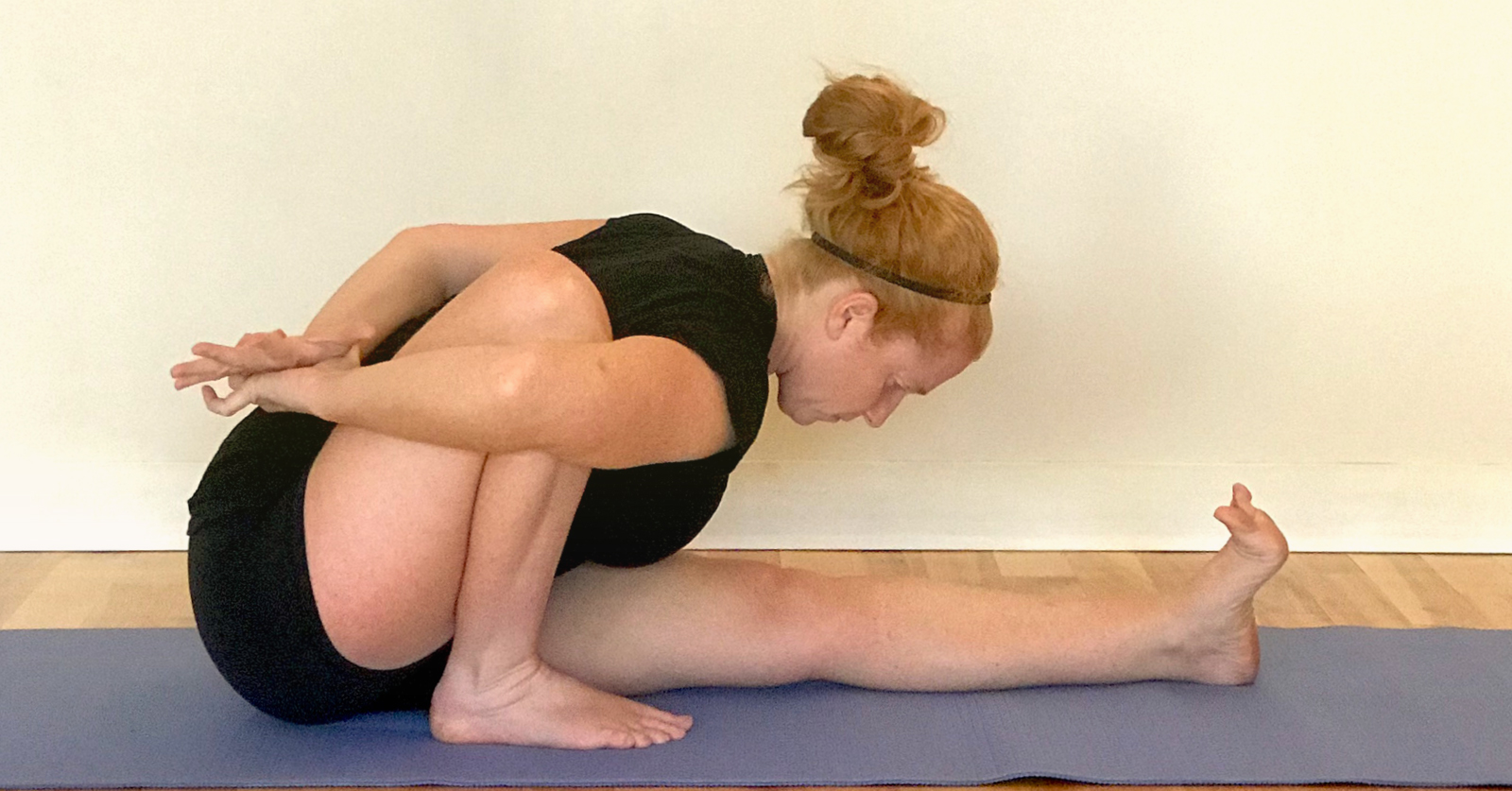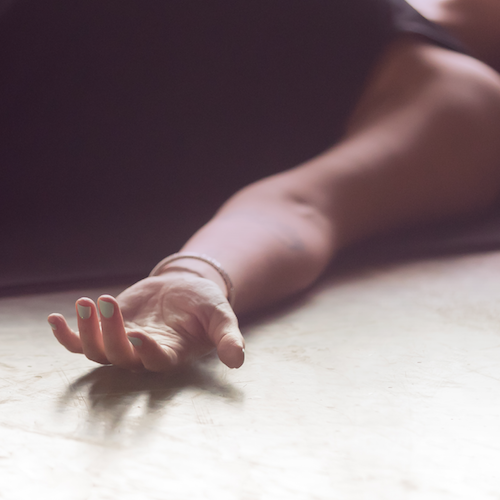Yoga Corner: Asana + Variations
The poses demonstrated here by Donna are intended to show the classical version of the pose, as well as the variations we use at United Yoga Montreal. Variations are introduced for a variety of reasons and purposes to aid in deepening our student’s understanding of the pose.
Utthita Parsvakonasana
Extended Side-Angle Pose
Utthita Parsvakonasana – Extended Side-Angle Pose
Utthita means “extended”, parshva means “side” and kona translates as “angle”. Utthita Parsvakonasana is a primary standing pose that develops the thighs and involves hip opening, spinal twisting and lateral extension. This pose aims to create space at the chest and pelvis, which encourages better breathing and increases circulation at the abdominal and pelvic area which in turn helps with digestion and elimination.
Variation 1 – Building up blocks to find the 90° angle in the bent leg teaches the body to know where 90° is and creates the ideal angle in this pose. The blocks are placed under the very top of the femur bone of the front leg near the sit bone which helps to understand the grounding action of the top femur of the front leg moving from the top of the femur down into the blocks and away from the hip bone. The hand in the wall teaches extension of the side torso from the outer edge of the back foot right to the fingertips in to the wall.
Variation 2– With the chair against the wall, place your knee in line with your 2nd and 3rd toe and also place your top shin bone into the chair. Here the knee is prevented from going forward or pulling backward and/or moving inward or outward. This variation also helps to reinforce the 90° angle of the bent leg. To go deeper into the pose, place your hand on a block and bring the top arm to the wall, pressing fingertips into the wall to feel the extension from the outer back heel to the finger-tips.
Variation 3– Learn to push the inner top femur of the back leg away from the chair and also push the outer back foot into the floor and wall to abduct the leg fully. The front leg is supported by the chair to find the 90° angle and to assist in the grounding of the top femur. The chair is also used to assist in the opening of the chest and shoulders and to learn the actions of the twist. NB- If you are taller than Donna, you will need a block under your sitting bone, on the chair. If you are shorter than Donna, you will need a block under the foot of the bent leg to “raise the floor”.
Variation 3 (a) – While technically not Utthita Parsvakonasana, this variation helps to understand and deepen the opening of the shoulders in this pose and provides a good hip-opener as well!
Variation 4 – With the outside part of the foot pressed into the floor/wall juncture this supports the back leg abduction. The hand on the block prevents the knee from rolling inward, and the sling works on lengthening the side body from the outer back foot to the fingertips with more intention. (NB: If your front knee tends to move to the outside while in the pose, the block should be placed on the outside of the leg instead, to keep the knee from rolling outward. -Not demonstrated.)
Variation 5 – The sling around the femur of the back leg is used to prevent the inner top femur from collapsing and teaches the inner top femur to move away from the sling towards the outer top femur to help better understand the action of abduction of the thigh and also aids with the action of externally rotating at that same thigh.
Prepared and demonstrated by Donna Read
Donna would like to express gratitude to her teacher, Hart Lazer and to his teachers for their inspiration and wisdom.






